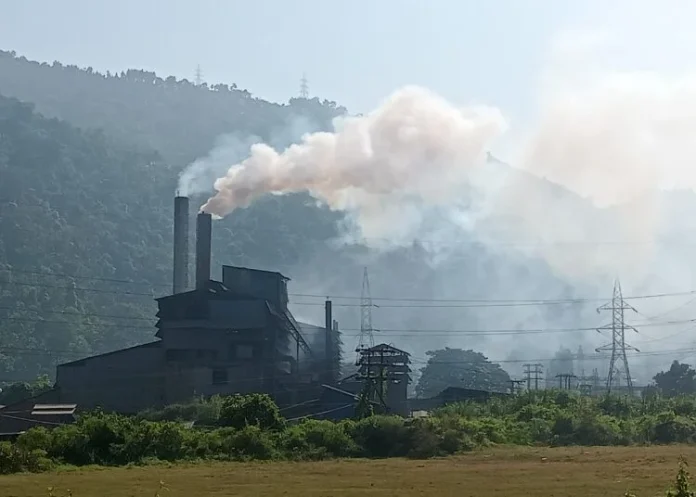SHILLONG, April 25: Byrnihat, once declared the most polluted city in the world in February 2025, has shown remarkable improvement in air quality following a series of stringent pollution control measures implemented by the authorities.
Recent reports indicate that the city’s average Air Quality Index (AQI) has dropped to the ‘moderate’ category, marking a significant shift from the previously dangerous levels of pollution.
In response to the alarming pollution levels, the Meghalaya State Pollution Control Board (MSPCB) launched a series of surprise inspections and environmental audits of industries in Byrnihat and surrounding areas in March. This initiative was triggered by an urgent directive from Meghalaya Chief Minister Conrad K Sangma, who ordered immediate regulatory intervention. The state government also coordinated with the Assam government to monitor industrial activities on both sides of the border.
The MSPCB, in an official statement, highlighted the encouraging outcome of these coordinated efforts. “The Chief Minister’s decisive action has been pivotal in controlling and regulating air pollution in the region. The MSPCB, alongside Assam Pollution Control officials, has conducted thorough environmental audits, issuing directives to industries to comply with pollution control norms,” the statement read.
The inspections revealed full compliance with emissions standards across all operational units in the Export Promotion Industrial Park (EPIP) in Byrnihat. These units were equipped with pollution control devices, online emission monitoring systems, water sprinklers, and surveillance cameras. Non-operational units also had monitoring infrastructure in place, ready for activation upon resumption of operations.
Earlier, during inspections in January and February, the MSPCB had issued closure notices and imposed penalties on industries found violating pollution norms. These units were permitted to reopen by mid-March after implementing the necessary corrective measures.
Recent air quality data supports the effectiveness of these interventions. Manual monitoring stations in Byrnihat recorded an average AQI of 110 during the third week of April, while the Continuous Ambient Air Quality Monitoring Station (CAAQMS) at 13th Mile Tamulkuchi in Assam reported an AQI of 123 on April 21. Both figures fall under the ‘moderate’ category, a stark improvement from the “severe” levels seen earlier this year.
Officials credit this positive development to a combination of stricter enforcement, effective emission control systems, sporadic rainfall, and improved coordination between the pollution control boards of Meghalaya and Assam.

